
DAY 1
Vadodara
Arrive Vadodara, check inn at hotel.
Modern Baroda is a great and fitting memorial to its late ruler, Sayaji Rao Gaekwad III (1875-1939 AD). It was the dream of this able administrator to make Baroda an educational, industrial and commercial centre and he ensured that his dream would come true.
Baroda is situated on the banks of the river Vishwamitri (whose name is derived from the great saint Rishi Vishwamitra). The city was once called Chandravati, after its ruler Raja Chandan, then Viravati, the abode of the brave, and then Vadpatra because of the abundance of banyan trees on the banks of the Vishwamitri. From Vadpatra it derived its present name Baroda or Vadodara.
Baroda has a rich historical background. The ardent historian can trace Baroda’s history over 2000 years and more. However, the recent threads can be picked up when the Moghul rule over the city came to an end in 1732, when Pilaji brought the Maratha activities in Southern Gujarat to a head and captured it. Except for a short break, Baroda continued to be in the hands of the Gaekwads from 1734 to 1949.
The greatest period in the Maratha rule of Baroda started with the accession of Maharaja Sayajirao III in 1875. It was an era of great progress and constructive achievements in all fields.
Maharaja Sayajirao was one of the foremost administrators and reformers of his times. He initiated a series of bold socio-economic reforms. He attached great importance to economic development and started a number of model industries to encourage initiative, and then handed back the working industries to private enterprise. He started model textile and tile factories. It is as a result of his policy of industrial development that Baroda is today one of the most important centres for textile, chemical and oil industries today. He introduced a number of social reforms. In no department of administration has the far-sighted policy of this wise ruler been more conspicuous than in education, and in none have the results been more real and tangible. He boldly introduced compulsory primary education and a library movement (the first of its kind in India) to augment his adult education scheme.
It was he who visualised a general scheme of development in all branches of knowledge at different stages, with the Maharaja Sayajirao University of Baroda at the apex. Modern Baroda owes its beauty, its educational institutions and its masterpieces of architecture to the insight and vision of this great ruler.
There is a saying that nothing grows under the banyan tree, but this is not true of Baroda. Having witnessed the rise and fall of the empires and kingdoms of the Hindus, Pathans, Moghuls and Marathas, it now occupies a unique position on the educational, cultural and industrial map of India. Yet, it has been fortunate enough to retain the beauty of its rich and varied past. And it is one of the few cities in India which is still influenced by the lost might of its ruling dynasties.
Overnight stay at Baroda.

DAY 2
VADODARA-CHAMPANER (48KMS)-AHMEDABAD (155KMS)
After Breakfast we will proceeds to visit The Laxmi Vilas Palace was the official residence of the erstwhile Maharajahs of Baroda. Though a little down at heel and run down, the palace still has impressive interiors done up with Venetian glass, crystal chandeliers, Italian marble and mosaic and find porcelain and marble statues from Europe. The tiered step-well called the Naulakhi Baoli which got its name because of the fact that it could store 9million gallons of water is near the palace.
Champaner – This city, located at 47 K in the north-east of Vadodara, was conquered in 1484 by Sultan Mahmud, and he renamed Begara Muhammadabad. Named World Heritage Site by UNESCO, counts 114 monuments of historical and archaeological interest, among them stand the mosque of Jama Masjid, for its impressive interior courtyard, its porches, beautiful arches and slender minarets.
Worth a visit also Shahr Masjid, with its row of columns, domes and delicate mihrab (niche facing Mecca) and Nagina Masjid with a charming porch.
Overnight stay at Ahmedabad.

DAY 3
AHMEDABAD-MODHERA (103KMS)-PATAN (38KMS)-AHMEDABAD (125KMS)
Today we go for an excursion to Modhera & Patan.
Modhera: The Sun temple of Modhera is one of the finest examples of Indian architecture of its period. Built in 1026 A.D. the temple is dedicated to the Sun-God, Surya and stands high on a plinth overlooking a deep stone-steeped tank. Every inch of the edifice, both inside and outside is magnificently carved with Gods and Goddesses, birds, beasts and flowers. Sun Temple of Modhera was built by King Bhimdev I (1026-27) and bears some resemblance to the later, and far better known, Sun Temple of Konark in the state of Orissa, which it predates by some 200 years. Like that temple, it was designed so that the dawn sun shone on the image of Surya, the sun God, at the time of the equinoxes. The main hall and shrine are reached through a pillared porch and the temple exterior is intricately and delicately carved. As with the temple of Somnath, this fine temple was ruined by Mahumad of Ghazni.
Patan: Home of the famous patola silk saris, Patan is a beautiful old town with Jain temples and carved wooden houses. Ranikivav (step well) is an excellent example of subterranean architecture of Gujarat. The exisquisitely carved side walls, pillars, beams, series of steps & platforms lead to the elaborately carved water well. Every surface is adorned with finelly chiseled sculptures of maidens & Hindu deities, religious motifs & geometrical patterns. Rani ki Vav represents the finest of the Indian sculptures and architecture.
Overnight at Ahmedabad.
DAY 4
AHMEDABAD
Morning visit Swaminarayan Temple: – A religious cult followed by Swami-Narayan followers. It is one of the sects of Hinduism & the devotee’s worship Lord Krishna by the name of Swaminarayan. This temple is built by Swaminarayan followers. It stands as a good example of exquisite wood carving.
Followed by a walk through ‘Pols’ in old city (typical Gujarati adjoining houses colonies). A Pol is a small residential unit consisting of a single street with a group of houses, which is usually protected by a massive gate at the entrance. When the gate is closed, the entire street becomes one big house often inhabited by people of the same trade or even by relatives. A compact housing cluster with dead-end streets forms a distinctive residential pattern within a Pol.
In earlier days, the Pols were self-sustaining for a certain period of time since each house had its own underground storage for water, and food grains were stored in the safest part of the house. At times, two different Pols opened for ventilation at the same point and they also had a common service bay for drainage, water supply and garbage collection. These Pols formed a kind of micro-neighborhood, which developed further as population density increased in the city.”
Thereafter visit Jumma Masjid – 1423 A.D, the most beautiful mosque in east. Built in yellow sandstone, this Friday Mosque, is a best combination of Muslim & Hindu architectural style. It stands on 260 pillars that support 15 domes at varying elevations.
After this visit Siddi Saiyed Mosque – 1572 A.D. A part of the wall in the old citadel of the mosque, is renowned the world over for its exquisite stone window tracery – a superb & peerless example of delicate carving that transforms stone into filigree.
Later on visit ATMA House (LE CORBUISER): The present office building of ATMA is a modern monument and a landmark in architectural history. The building is, at once, a symbol of the patronage and modernistic aspirations of the Ahmedabad textile community as well as a refined example of the work of its Swiss-French architect – Charles Eduoard Jeanneret (1887-1965), better known as Le Corbusier.
The Mill Owners’ Association Building, as it is known, was the first commission to be completed in 1954. The building is located on Ashram Road, in the western part of the city, overlooking the river Sabarmati. A ceremonial ramp makes for a grand approach into a triple height entrance hall, open to the wind. Arrival is on the first floor, where (as per the original design) the executives’ offices and boardroom are located. The ground floor houses the work-spaces of the clerks and a separate, single-story canteen at the rear. On the third floor is a high, top-lit auditorium with a roof canopy and a curved, enclosing wall, in addition to a generous lobby. The east and west facades are in the form of sun breakers or brise-soleil, one of Corbusier’s many formal inventions, which, while avoiding harsh sun, permit visual connection and air movement. While the brise-soleil act as free facades made of rough shuttered concrete, the north and south sides, built in rough brickwork, are almost unbroken.In 1951, Jawaharlal Nehru invited Corbusier to India to plan and design the city of Chandigarh. During this visit, Corbusier was invited to Ahmedabad by Chinubhai Chimanbhai, the erstwhile mayor of Ahmedabad. Surottam Hatheesing, the then president of AMOA, commissioned Corbusier to build the Association’s new headquarters. Corbusier was commissioned a total of five buildings in Ahmedabad, two institutions and three residences, of which one was not built.
Indian Institute of Management (LOUIS KAHN): In 1962, Indian architect Balkrishna Doshi invited Louis Kahn, one of the most influential architects of 20th century, to design the building for the Indian Institute of Management (IIM) in Ahmedabad. It was to comprise a main building with teaching areas, a library and faculty offices around the main courtyard, separate dormitory units for the students that were to be interconnected with a series of arched passages, and houses for the faculty and staff. Kahn’s presence in the 1960s signals a turning point in contemporary architecture in post-independent India. When designing the school, Kahn put into question how and where people learn. Learning was not happening strictly in classrooms, but in the corridors and the spaces in between as well. Through his massive yet austere brick forms, Kahn offered architects a spiritual experience that made them believe they could effectively build the new nation and achieve a balance between modernity and tradition. Built between 1962 and 1964, the IIMA complex now sits on a 60-acre campus.
Sanskar Kendra – Ahmedabad City Museum (LE CORBUISER, 1951-59): The museum is a prism that rises from ground level on Pilotis level of an array of 7 x 7 meters, forming walkers fourteen feet wide spiral circulations generated within the building. It currently has ground floor to four floor levels, a roof (the deck is a concrete slab is covered with a layer of lightweight concrete, then a waterproof layer, then cover it for different layers of earth and gravel to fill all “vessels” with water) and a Hormgión (floors are concrete and the woodwork and doors are steel extrusions and riveted laminated steel).
Overnight at Ahmedabad.

DAY 5
AHMEDABAD – LOTHAL (90KMS) – BHAVNAGAR (110KMS)
Today, after breakfast visit Sarkhej Roza, Lothal & drive to Bhavnagar.
Lothal: A perfect place to get an insight of the Indus Valley civilization. The most dominating site at Lothal is the massive dockyard spanning an area of 37 meters by 22 meters perhaps the greatest work of Maritime Architecture. Lothal was also famous for its arterial streets, microbes of gold, ivory and coppersmiths’ workshops, potteries and underground sanitary drainage. It is located at a distance of 78 kms from Ahmedabad. (Closed on Fridays).
Sarkhej Roza: Is about 8 kilometres away from the city, Sarkhej Roza comprises one of the most elegant architectural complexes of Ahmedabad. Grouped around a great stepped tank is the tomb of the saint, Ahmed Khattu Ganj Baksh (1445), the mosque (1451), the tombs of Muhammad Shah Begada and his queen, the palace and pavilions.
Overnight at Bhavnagar.

DAY 6
BHAVNAGAR-PALITANA (52KMS)-GONDAL (200KMS)
Very early this morning you may wish to join the pilgrims and climb Palitana which is situated 50kms from Bhavnagar. The hills of Palitana are known as the ‘Abode of the Gods’ and are covered with 863 Jain temples spanning a period of over 900 years. Their finely carved spires and towers glisten in the sunlight as pilgrims make the uphill journey on foot. The climb will take about two hours each way so do carry water and a sun hat with you.
Overnight stay at Gondal.

DAY 7
GONDAL-JUNAGADH (64KMS)-GONDAL
Today undertake visit to Junagadh which is located 60kms to the south west of Gondal. Junagadh is one of India’s most historic cities – ancient artefacts have been found on the hilltop citadel, Emperor Ashoka’s edicts were inscribed on rock here during the 3rd century BC and Buddhist caves all serve to ratify the antiquity of the city. Formerly the capital of Gujarat under the Kshattrapa dynasty, the Chudasama Rajputs later ruled from the town from 875 AD onwards.
Once in Junagadh visit the Uparkot Citadel – expanded in 1472, 1683 and 1880 – which is on a small plateau to the east of the town and the Jama Masjid in its centre which was built from the remains of a Hindu palace. Also of interest is the 11th century Adi Chadi Vav step-well, or baoli, with its 172 steps and beautiful spiral staircase. After touring the fort, drive down to see the impressive mausoleum complex of the latter Junagadh rulers – the Maqbara of Baha-ud-din Bhar is flamboyant and features intricate carvings. On the return to Gondal stop to visit the 4th century Buddhist caves which are located in the small village of Khambalida and have splendid carvings of the Bodhisattvas.
Overnight at Gondal.
DAY 8
GONDAL-BHUJ (260KMS)
Today we drive to Bhuj & visit Aaina Mahal &Prag Mahal.
Visit Aaina Mahal: It was constucted by Rao Lakhpatji (1707-61 A.D.) in 1750 A.D., who was a great patron of art, architecture, music and literature. AainaMahal is a unique example of an Indian palace built in the mid-eighteenth century with European influence.
Prag Mahal: Rao Pragmalji II (1838-76 A.D.) undertook the constuction of PragMahal and appointed the famous architect – Colonel Henry Saint Wilkins to design it. Constructed in the Italian Gothic style, it has a large Darbar Hall, big rooms, wide verandahs& a 45 meter high lofty bell tower. It was built using the various type of stones available in Kutch region. This is a fine example of Indian craftmanship combined with European architectural design.
Overnight at Bhuj.

DAY 9
BHUJ – DHOLAVIRA (250KMS) – BHUJ
Today early morning do an excursion to Dholavira.
Dholavira: At the height of our civilization, our technological development, our social and material complexity, all signs point to progress, we often think. And yet, all is not as it seems and once in a while it occurs to us to look into the past to discover our future.
Dholavira is the larger of the two most remarkable excavations of the Indus Valley Civilization or Harappan culture, dating back to 4500 years ago. While the other site, Lothal, is more exhaustively educated and easier to reach, a visit to Lothal only complements, rather than replaces, a visit to Dholavira. What this site offers you, in the intense environment that comes with being surrounded by the Great Rann of Kutch, is a unique insight into the pioneering Harappan mind, with one of the world’s earliest and best planned water conservation systems and what might be the world’s first signboards, written in ancient Indus script.
The excavation also tells the story of the seven stages of the civilization, from development to maturity to decay, the last of which hints at a strange piece of history, with more questions than answers. After the peak of the civilization Dholavira was temporarily abandoned, after which it seems that the settlers returned with a markedly de-urbanized culture. There are hints that they willingly chose to simplify their lives, rather than try to ride the collapse of their once glorified civilization. Here, on the ruins, you will have a chance to contemplate what progress and civilization mean and what, if anything, is truly permanent.
Fossil Park (Dholavira) : During a plantation drive in Dholavira village in December 2006, range forest officer (RFO) A B Khamar and forest guard P R Koli stumbled upon something which could prove to be a priceless addition to the geological treasures of India.
Khamar, stationed at Rapar North in the border district of Kutch, came across some fossilised logs at the ancient site of Dholavira on Khadir island in the Rann of Kutch. Preliminary observations indicate that the plant remains could be around 187 million years old.
On December 11, Khamar sent these logs to experts at the Geology Department of Vadodara’s M S University (MSU), Deccan College, Pune and Lucknow’s Birbal Sahni Institute of Palaeobotany for further study. This new find has rekindled researchers’ interest in this ancient site which has been in the limelight.
Khamar said, ”A forest team planting saplings at Dholavira village spotted the plant fossils. This site is located 11 km away from the Harappan site in Dholavira. Soon, all range forest officials rushed to the spot to see for themselves.”
Preliminary examination of the samples carried out by Prof K C Tiwari at MSU’s Geology Department have found that they could be from the Jurassic age, very old and rare in Western India. Earlier, such plant fossils were found in Jaisalmer, Rajasthan. Talking to The Indian Express, Tiwari said, ”These samples are fibrous in nature and belong to some plant fossil (pertrified wood).”
Geologically, these plant fossils are associated with the khadir formation with a sandstone-shale-limestone sequence, belonging to Jurassic Age (Aelenian-Bathonian), said Tiwari. Tests at MSU’s laboratory showed that these plant remains could be 187-176 million years old and are similar to fossils found at the lathi formation (Jurassic) of Jaisalmer. A plant fossil park has been established by the Geological Survey of India (GSI) at Akal.
Tiwari said that after examining the samples and site photographs of the plant remains which had been sent to them, it could be said that the logs were at least eight to ten meters long and about half to one meter in diameter. He is likely to make a site visit with the forest officials late this week.
The MSU geologist said, “These petrified wood fossils should be considered an important discovery and rare historical treasure for Gujarat. Such findings need to be protected and preserved.”
However, MSU experts said that detailed field verification and laboratory studies are required to establish the exact plant species and its age, which will help to understand its evolutionary history and its correlation with other associated areas in Western India.
Around six years back, while searching for oil, ONGC had also found dinosaur egg fossils in large amounts near Kuwar Bet (Island of Kuwar) in the Rann of Kutch.
Return to Bhuj for an overnight stay..

DAY 10
BHUJ-MUMBAI DEPARTURE
Today we take a flight from Bhuj airport to Mumbai.





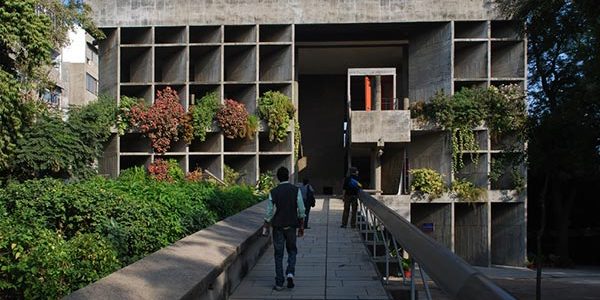









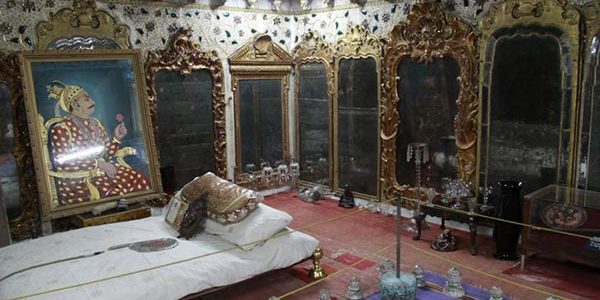
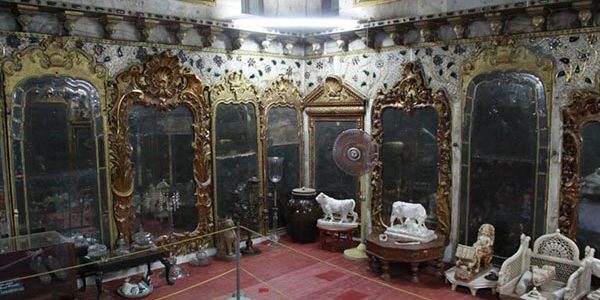
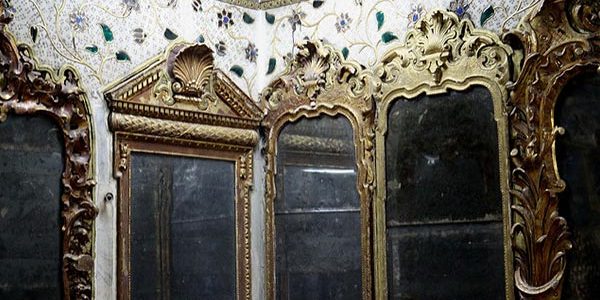
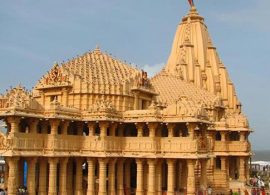
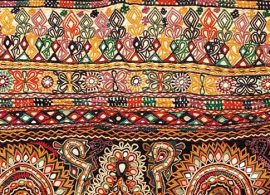
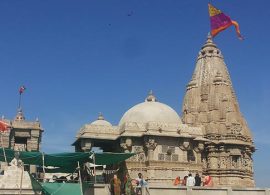
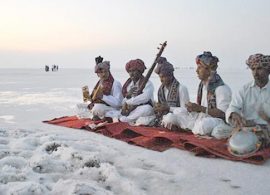
Reviews
There are no reviews yet.